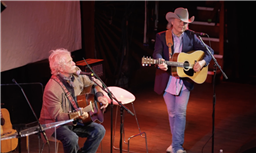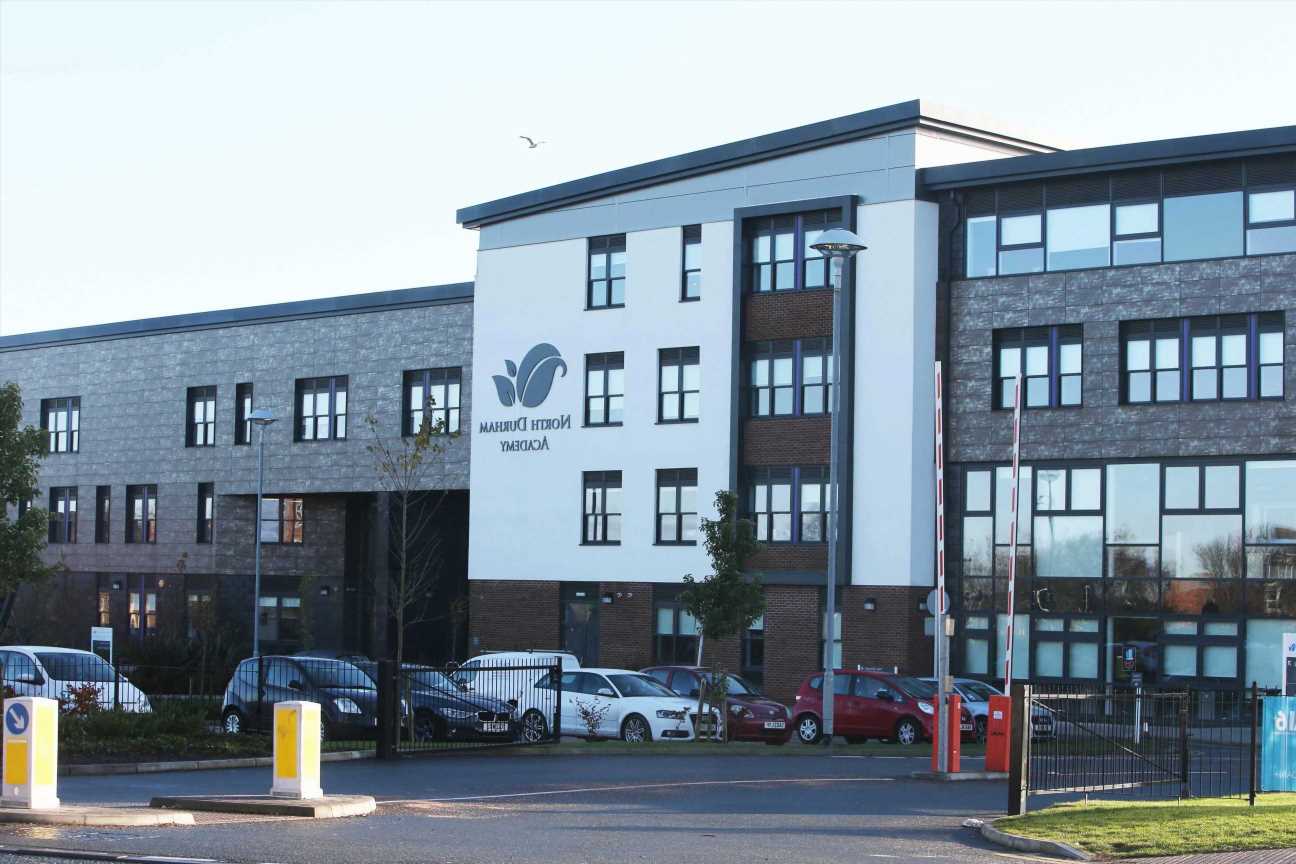Attention, L.A. country music fans: It may be time to charter a bus.
Come Sept. 30, the Country Music Hall of Fame and Museum in Nashville will be opening a new exhibit, “Western Edge: The Roots and Reverberations of Los Angeles Country-Rock,” in a newly renovated, 5,000-square-foot gallery filled with artifacts, annotation and video largely collected from the scene of the crime in Cali. It covers three distinct decades in SoCal music history: the ’60s, ’70s and ’80s. L.A. scenesters who remember any of these eras fondly may have their lives flashing before their eyes, and they’ll only have to book a ticket to Tennessee to do it.
There’s no huge hurry to get there; “Western Edge” will be on display at the Hall of Fame for three years. But for those who’ve hankered for decades to see this kind of historical homage come together, the opening can’t come fast enough.
“Everybody’s dealt with the first incarnation of the sound, from the Depression up through Buck and Merle,” said Dwight Yoakam, at a media event held at the Troubadour to spur west coast interest in the exhibit, “but not many have dealt with the things that came after — the things that inspired me as a teenager and in college and that drew me to the west coast. It was a beacon, that stuff.” He added, “It’s an honor to be part of this exhibit that has to do with that next stage of the Tom Joad road that led to California’s version of country music… They’re doing Ken Burns-level research.”
Sitting at the bar of the Troubadour, on a seat he no doubt sat on almost 60 years ago, country-rock pioneer Chris Hillman shared his excitement for the exhibit with Variety. He sat in that same spot at the beginning of 2020, just before the start of the pandemic, to do a lengthy interview that will be excerpted in video stations and on the museum’s website. He also donated the donated the 1958 Martin D28 guitar that he learned to play on, and “I think one of my (Nudie’s) suits is down there,” he said.
“I’m looking forward to seeing it in its entirety when it’s done,” said Hillman, who made both country and rock history as a member of the Byrds, Flying Burrito Brothers and Desert Rose Band. “Honestly, I didn’t know it was gonna be this big or what an event it has become and will become. Now I’m taking it seriously. It’s gonna be really interesting because you start thinking about it and dig deeper into the whole concept of all these different players filtering in, right through this bar, where everybody was interacting with each other, and not in a competitive way — sharing ideas or writing songs together. At the time, you take a lot of it for granted.”
Perhaps the most surprising thing about “Western Edge” is that it doesn’t stop with the ’60s and ’70s framing of country-rock, from the Byrds and Flying Burrito Brothers to Linda Ronstadt and the Eagles, but continues into the country-punk era — a time that may seem way too fresh, to those who were part of it, to be celebrated in a museum. (Do the math, cowpunks.)
Let Michael McCall, a former music journalist who is now the Hall of Fame’s senior editor, take you through some of what he’s made multiple trips from Nashville to L.A. to work on, including dozens of hours of video interviews:
“The ’80s people were all great great. Dwight is doing the opening narration for an introduction to the exhibit, and we did more than two hours of interview with him,” McCall says. “Los Lobos has been outstanding; Louis Perez was the interview, but we got instruments from all of ’em — and Cesar (Rosas)’s Ray-Bans! Dave Alvin was one of my best interviews; he just so articulate, the way he talked about the whole scene. Lucinda Williams, even after her stroke, Lucinda came in and talked for about an hour, and was great; her Rough trade album is the only one that kind of falls in that (’80s) period. Rosie Flores was great. Alejandro (Escovedo), we’re still going to talk to about Rank & File.”
That’s not all, Palomino-heads.
“With Lone Justice, we met with Ryan Hedgecock and Marvin Etzioni, and Ryan in particular had like 20 manuscripts and 20 or 30 set lists that they wrote by hand from the early days… and the first flier, when they were opening for Rank and File and they went around the Universal Amphitheatre at a Blasters show and put them on everybody’s car windshields. And Maria McKee was an outstanding, outstanding interview — one of my favorites, really colorful. She dressed up in what she called her ‘Loretta Lynn gown’ — a floor-length, multicolored, Southern ball gown. She looked more like Scarlet O’Hara, almost. She was so passionate and gave so many good stories. I didn’t know she been a street performer with her brother (Love’s Bryan MacLean) singing gospel songs at 16, for instance, and that was part of why she learned to project.”
This is not to slight the even more pioneering types who invented country-rock in the two decades prior to that. Some of the interviewees and donators from the first flowerings of the hybrid included Emmylou Harris and the Nitty Gritty Dirt Band’s Jeff Hannah, who performed together at an event in Nashville to announce the exhibit, just as Hillman and Yoakam were doing the same in L.A. Bernie Leadon of the Eagles was one of McCall’s first interviews for the project, which will also cover artists as disparate but similarly ground-breaking as the Dillards, Poco, the International Submarine Band, the early ’60s L.A. bluegrass band the Kentucky Colonels, and, of course, two of the real pioneers in marrying pop and twang, Ricky Nelson and the Monkees’ Michael Nesmith.
(All of this will come together not just in the Nashville museum space but via an accompanying book that Angelenos won’t necessarily even have to travel 2,000 miles to pick up. The companion volume has been penned by Randy Lewis, who covered the L.A. music scene for decades before retiring from the Los Angeles Times.)
Yoakam is perfectly happy the exhibit has landed in Nashville, given his high regard for the host museum. “The Country Hall of Fame is the best thing about Nashville,” he said. “The Country Music Hall of Hame is what should be the template for any musical hall of fame, anywhere,” the singer added, perhaps throwing a bit of shade elsewhere, for “the amount of reverence that they show toward the foundational creators of the genre and all those that have come after.”
Said Hillman, “That bar in the Troubadour, more music came through that door into this room – Joni Mitchell and Elton John, and the Byrds played here one night when we started out, and the Flying Burrito Brothers played here. It was so interconnected, and as (Yoakam) well put it for many years, the edge of the continent. It was the Tom Joad road, and everybody comes out, be they musicians or actors or writers or artists, and you stop there at the Pacific Ocean and that’s it. … You have to do it or swim!”
Although Yoakam never adopted quite Hillman’s or Gram Parsons’ level of flashy Western-wear, he said it was inspiring to him as a kid to see, and the sounds went deep into his soul.
“The Burrito Brothers were the most famous band that a lot of people never actually heard the records of,” Yoakam said, “but I knew … those long-haired hippie cowboys from the Sunset Strip that had on those Nudie’s suits. And it fascinated me when I was in junior high and high school, (as) a hillbilly kid from Kentucky who moved to Ohio and felt kind of like a fish out of water in the music that I listened to.”
Hillman did his interview for the exhibit in the Troubadour bar long ago enough now — two and a half years — that asking him about it is kind of like asking for a recollection of a recollection. But “I have a good memory, I must say,” says Hillman (who published a memoir a few years ago, “Time Between,” named after a Byrds song that Yoakam considers one of the first real country-rock tunes).
“And I never go into dark areas or negative things. It’s no point in doing that. I remember it all, and I remember all good things. It was exciting, and it was just so artistically free — and the music business, as you know, was a whole different animal then. You really got signed to a label, but they’d stick with you. If you didn’t sell platinum off the first release, they didn’t throw you in the street, they would stick with you and nurture you, in those days, the early and mid-60s.”
The opening weekend for the exhibit will include two concerts at the CMA Theater. On Sept. 30, the all-star lineup for for the first show will include Hillman, Dave Alvin, Alison Brown (paying tribute to California bluegrass), Rodney Dillard, Rosie Flores, Richie Furay, Jeff Hanna, Bernie Leadon, John McEuen, Wendy Moten (paying tribute to Ronstadt) and Herb Pedersen.
The other show that weekend, on Oct. 2, will consist entirely of a reunion performance by the Desert Rose Band, the group that Hillman, Pedersen and John Jourgensen formed in 1988 that found mainstream country success. Nearly the entire original lineup will be on board, save for the late bassist Bill Bryson.
Hillman tells Variety that, as much as he’s looking forward to it, this Oct. 2 will be a one-and-done reunion for the Desert Rose Band.
“That’ll be good because we all remained friends — you know, an oddity in the music business,” Hillman says. “Usually groups break up and never speak to each other, and we all have remained friends beyond the group’s heyday, and we’ve all worked together beyond the group’s heyday. So getting back together is real nice. We did one huge festival in Norway, which was about 10 years ago, and that was it. And after this show on Oct. 2, that’s it. I’m done. Basically I’m retired. I don’t tour anymore.”
No more solo tours, either? “Nah. Well,” he allows, “you never know that. But the Desert Rose Band is going to retire. I rarely go backwards, and I have for this band a few times. But it was a great band — really good players, and our live performances were in the 90th percentile as far as professionalism. So I always fondly remember that. But the other groups, I never went backwards with them. And sometimes it’s impossible because you’ve lost people over the years.”
Hillman hasn’t been wholly doctrinaire about resisting reunions; there was that brilliant “Sweethearts of the Rodeo” tour in 2018, although maybe it helped that it wasn’t billed as the Byrds. “I loved that so much,” Hillman concedes, calling it “one of the best, if not the best, tour I’ve ever gone on. Marty Stuart and the Superlatives (the backing band) were just wonderful, and working with Roger McGuinn again after 25 years, it was like no time had passed. That first night we played in downtown L.A. at the Ace, when Roger hit that first note on ‘My Back Pages,’ it just fell in place. Wonderful tour.”
Once you get him going, even as professed a non-backwards-looker as Hillman has to admit: “Sin City” is a hell of a place to revisit.
Source: Read Full Article


